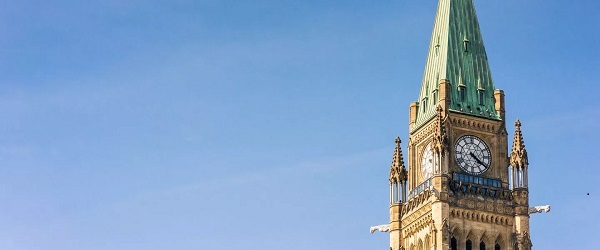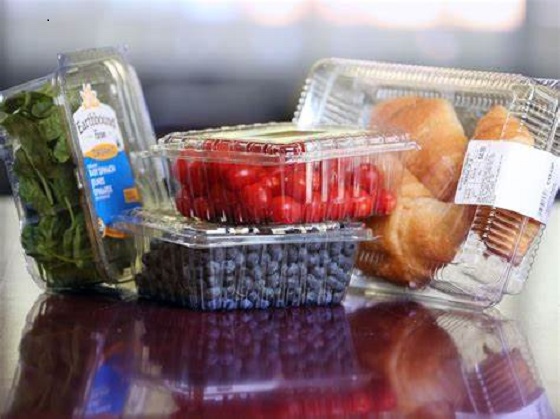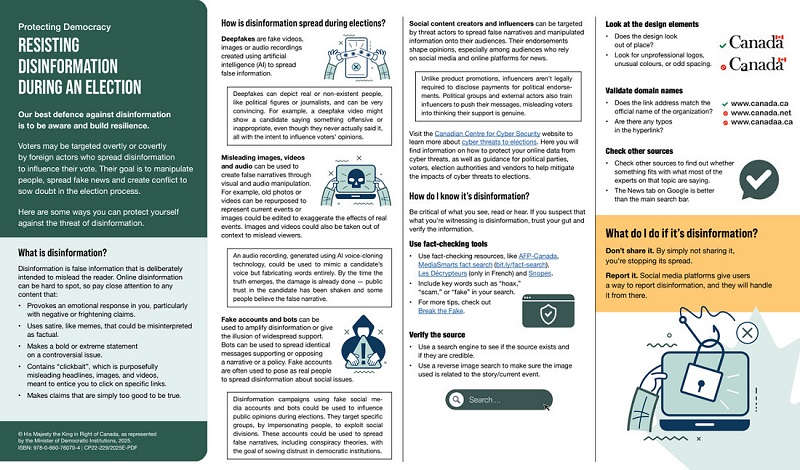Business
Federal government could save $10.7 billion by eliminating eight spending initiatives

From the Fraser Institute
By Jake Fuss and Grady Munro
During its tenure, the Trudeau government rejected any semblance of spending restraint and increased spending (and borrowing) at every turn. However, due to the rising cost of deficits and debt, coupled with pressures to increase spending in neglected areas such as defence, the next federal government—whoever that may be—may finally be forced to find savings and reduce spending.
But where to look?
The government should immediately review all spending on the basis of efficiency, value for money, and the appropriate role of government—similar to the spending review initiated by the federal Chrétien government during the 1990s. Here are some line items ripe for the cutting board.
| Spending Area | Projected Spending in 2024/25 |
|---|---|
| Regional Development Agencies | $1.5 billion |
| Government Supports for Journalism | $1.7 billion |
| Incentives for Zero-Emission Vehicles | $0.6 billion |
| 2 Billion Trees | $0.3 billion |
| Canada Infrastructure Bank | $3.5 billion |
| Strategic Innovation Fund | $2.4 billion |
| Global Innovation Clusters | $0.2 billion |
| Green Municipal Fund | $0.5 billion |
| Total Potential Savings | $10.7 billion |
Regional Development Agencies: The federal government operates seven Regional Development Agencies (RDAs), which deliver financial assistance (a.k.a. corporate welfare) to businesses. Despite spending an estimated $1.5 billion in federal taxpayer money in 2024/25, the RDAs do not provide any widespread economic benefits to Canadians. Instead, they simply redistribute those dollars to private firms and pick winners and losers in the free market. When reporting on the results, the government offers vague platitudes such as “businesses are growing” and “communities are developing economically.”
Government Money for Journalism: In 2024/25 the federal government spent an estimated $1.7 billion to support Canadian journalism including the operating costs (e.g. wages) of newspapers and broadcast outlets such as the CBC. Despite these efforts, and the considerable price tag, hundreds of news organizations have closed since 2020 and layoffs have persisted—largely due to the disruptive effects of the Internet. Simply put, the traditional media sector is in decline, and the government’s costly attempts to reverse this trend have been ineffective.
Federal Support for Electric Vehicle Purchases: As part of its push to reduce emissions, the federal government will spend an estimated $587.6 million to subsidize electric vehicle (EV) purchases in 2024/25. This spending is inefficient and wasteful. EV incentives are expensive—costing a minimum of $177 per tonne of greenhouse gas (GHG) emissions, whereas the federal carbon tax in 2024 was much cheaper at $80 per tonne of GHG emissions.
The 2 Billion Trees (2BT) Program: Ottawa has earmarked $3.2 billion for the program from 2021 to 2031, with expenses in 2024-25 alone estimated at $340 million. While laudable in theory, the program has been poorly executed. In its first two years, the federal government spent roughly 15.0 per cent of the total budget to plant merely 2.3 per cent of the two billion trees. In fact, the 2BT program has used trees planted under a different program to artificially boost its numbers.
Canada Infrastructure Bank (CIB): Established in 2017, the CIB is a federal Crown corporation tasked with investing and attracting investment in Canadian infrastructure projects. Over its more than seven-year lifespan, the CIB has approved approximately $13.2 billion in investments across 76 projects (as of July 2024). In 2024/25, federal CIB funding will equal $3.5 billion. Though multiple problems plague the CIB, chief among them is its inefficiency in advancing projects. As of July 2024, only two CIB-funded projects had been completed. This lack of progress was a chief concern in a previous House of Commons committee report that made the sole recommendation to abolish the CIB.
Strategic Innovation Fund (SIF): With federal grants and contributions, the SIF funds projects based on their purported potential to deliver innovation and economic benefits for Canadians. While Canada certainly suffers from a lack of innovation, this spending (to the tune of $2.4 billion in 2024/25) simply shifts jobs and investment dollars away from other firms and industries—with no net benefit for the overall economy. Similarly, increased government spending on innovation may simply crowd out private-sector investment, leading to no net increase in innovation investment.
Global Innovation Clusters (GIC): The federal government launched the GIC program, like the SIF, to address the lack of innovation in Canada. The government expects to disperse $202.3 million through the GIC in 2024/25 alone, targeting the five “clusters” of business activity the government chose in 2018. But again, because the clusters represent specific industries and technologies (e.g. artificial intelligence, marine technologies, manufacturing), the federal government is incentivizing firms to spend time and resources modifying their businesses to secure grant rather than focusing on the development of new/improved goods and services.
Green Municipal Fund (GMF): The GMF spends federal tax dollars on municipal projects that purportedly accelerate the transition to net-zero greenhouse gas (GHG) emissions. In 2024/25, the federal government will contribute $530 million to the fund. While the fund maintains emissions-reduction targets for projects, several projects approved for funding will not reduce GHG emissions in any measurable way—for example, “climate-friendly” home tours and funding for climate advocacy groups in Ottawa. In other words, the GMF is spending taxpayer dollars on projects that make no apparent progress towards the GMF’s stated goal.
In total, these eight spending initiatives add up to approximately $10.7 billion in potential savings for the 2024-25 fiscal year alone. And remember, these are just the low-hanging fruit. The next federal government can find further savings through a more comprehensive review of all spending.
2025 Federal Election
The “Hardhat Vote” Has Embraced Pierre Poilievre

 David Krayden
David Krayden
Blue collar and unionized workers are supporting Pierre Poilievre and the CPC
When President Richard Nixon won a landslide in his 1972 reelection, he did so by broadening his own personal popularity and the appeal of the Republican Party to blue collar and unionized workers. It was called the hardhat vote and many working people embraced Nixon because he seemed to be talking the same language as they were. Nixon talked about law and order and getting tough on crime; safer streets and harsher penalties for serious crime. Although unionized workers had traditionally voted for the Democratic Party and seen the Republicans as the party of the wealthy, by 1972 the Democrats had moved far to the left on social issues and were completely out of touch with average Americans who saw Democratic presidential nominee Sen. George McGovern as being soft on crime and approving of the anarchy on the streets.
It’s precisely the language that Conservative Party of Canada leader Pierre Poilievere is speaking in the 2025 federal election. As support for the New Democratic Party has collapsed throughout the election campaign, don’t think most of it is going to the Liberal Party. Poilievre has been targeting blue collar workers for years with his emphasis on the trades and talking about middle class tax cuts and safe streets. A factory or construction worker is middle class and just want an affordable lifestyle for their families. They don’t have a lot of time for the woke underbelly of the Liberals or the NDP and are increasingly reluctant to support either party because both have appealed to elites.
Listen to Karl Lovett, the president of the Local 773 of the International Brotherhood of Electrical Workers, talk about Carney corruption and why he is supporting Poilievre and the CPC in 2025.
“Mark Carney also failed to pay $5 billion in Canadian taxes by hiding his company’s assets in Bermuda above a bike shop. Hard to believe that information comes from Canada’s NDP, or at least who is left of them, because the irony is, Mark Carney has eaten all those people alive. Even the mayor of Lima has warned Canadians not to vote for Mark Carney, and why for ripping him off the poorest of the poor people in Peru. That’s who he ripped off,” Lovett said.
“Listen, there are countless other outrageous examples proving that Mark Carney doesn’t give a damn about the Canadian working man. And now, as prime minister, which he’s not, Carney is promising to put carbon tax and tariff on the auto industry. It’s another rip-off screen that’s right. We’re getting punched by Trump on one side of the border, and Carney plans to punch us on this side of the border, also pretending it’s all about climate change, and now he’s made millions off the workers’ backs. He wants more than money. He wants more power. He wants all of the power to do whatever he wants to do. Mark Carney cannot be trusted with this power. Mark Carney cannot be trusted to protect workers,” Lovett continued.
The union leader told a cheering crowd that “Mark Carney is in it for himself, and when he loses this election, you can bet Mark Carney is going to leave Canada in a New York minute. But there’s hope, there’s hope, there’s our last hope. His name is Pierre Poilievere – the .only hope for Canadian workers. You see Mark Carney fooled Justin Trudeau. We can’t let him keep fooling us.”
“Local 773, which I represent, knows Pierre Poilievre very well. We can proudly tell you that Pierre has our back. Pierre has been putting Canadian people to work and Canadian workers. First, local 773 began working with Pierre Poilievre, the Conservative Member of Parliament Chris Lewis, some years ago, when it became all too clear that the Liberal Party had zero interest in helping out workers. Upon winning the leadership of the party, Pierre made Local 773 his very first priority, he came to my union hall. Pier made the Local 773 Visitor Training Center, and he met all our workers, and he made a pledge to me; he’s not going to turn his back on us, and I believe him,” Lovett said.
Toronto Sun columnist Joe Warmington agreed with me and you can hear that entire interview, below. “Labor wants to work, and they want to, you know, build things, and they want those good, paying jobs, and that’s what Poilievre has always been about, you know.”
“He wants more power. He wants all of the power to do whatever he wants to do. Mark Carney cannot be trusted with this power. Mark Carney cannot be trusted to protect workers,”
“Again, it’s hard to know, but I always felt … and I still think that Poilievre is going to pull this off because of these reasons that you’ve raised today, I never really bought into and again, I’m just one person’s opinion, and I go on the ground. In the air, the polls are saying, I know there’s this main street poll today, maybe it’ll swing differently. But in the air, it says one thing, and on the ground, it says another thing. And that clip you just showed, that’s the ground, that’s where the workers are, that’s where the families are.”
2025 Federal Election
Poilievre will cancel Mark Carney’s new Liberal packaging law and scrap the Liberal plastic ban!

From Conservative Party Communications
Conservative Leader Pierre Poilievre promised today that a new Conservative government will stop Mark Carney’s proposed Liberal food tax and scrap the existing Liberal plastic ban. Poilievre will:
- Stop proposed new labelling and packaging requirements that will raise the cost of fresh produce by as much as 34% and cost the average Canadian household an additional $400 each year.
- Scrap the Liberal plastics ban, including the ban on straws, grocery bags, food containers and cutlery, and other single-use plastics, letting consumers and businesses choose what works for them.
- Protect restaurants, grocers, and low-income Canadians from one-size-fits-all packaging rules that disproportionately affect those who can least afford it.
“After the Lost Liberal Decade, many Canadians can barely afford to put food on the table. And now Mark Carney and the Liberals want to make it even harder with a new food packaging law that will raise the price of food–again,” said Poilievre. “A new Conservative government will keep food prices down by scrapping the Liberal plastic ban and stopping Carney’s new Liberal food tax.”
After a decade of out-of-control spending and massive tax increases, families are spending $800 more on food this year than they did in 2024, and food banks had to handle a record two million visits in a single month. In Montreal, 44 percent of CEGEP students are experiencing some form of food insecurity, while places like Hawkesbury, Kingston, Toronto and Mississauga have all declared food insecurity emergencies.
And food prices are still rocketing upwards, surging by 3.2% over the last year, with no end in sight. In the last month alone, food inflation increased by 1.9 percentage points—the largest monthly jump in food prices in decades.
As if this wasn’t bad enough, Liberals have made life even more expensive and inconvenient for Canadians by banning plastics – including everything from straws to bags to food packaging. The current Liberal ban on single-use plastics will cost Canadians $1.3 billion dollars over the next decade.

Now Mark Carney wants to make it worse by adding complicated and costly new food packaging rules that will drive up the price of food even more–in effect, a new Liberal food tax. Plastic food packaging makes up 1/3 of all plastic packaging in Canada. The proposed Liberal food tax will cost the average Canadian household an additional $400 each year, waste half a million tonnes of food, decrease access to imported fruit and produce, and increase food inflation. The Chemistry Industry Association of Canada has also warned that this tax will put up to 60,000 Canadians out of work.
“The Liberals’ ideological crusade against convenience has already driven up food prices and the last thing Canadians need is Mark Carney’s new food tax added directly to your grocery bill,” said Poilievre. “The choice for Canadians is clear, a fourth Liberal term that will make food even more expensive or a new Conservative government that will axe the food tax and bring back straws, grocery bags and other items, to make life more affordable and convenient for Canadians – For a Change.”
-

 Daily Caller2 days ago
Daily Caller2 days agoTrump Executive Orders ensure ‘Beautiful Clean’ Affordable Coal will continue to bolster US energy grid
-

 2025 Federal Election2 days ago
2025 Federal Election2 days agoBREAKING from THE BUREAU: Pro-Beijing Group That Pushed Erin O’Toole’s Exit Warns Chinese Canadians to “Vote Carefully”
-

 COVID-192 days ago
COVID-192 days agoTamara Lich and Chris Barber trial update: The Longest Mischief Trial of All Time continues..
-

 2025 Federal Election23 hours ago
2025 Federal Election23 hours agoPRC-Linked Disinformation Claims Conservatives Threaten Chinese Diaspora Interests, Take Aim at PM Carney’s Debate Remark
-

 Energy2 days ago
Energy2 days agoStraits of Mackinac Tunnel for Line 5 Pipeline to get “accelerated review”: US Army Corps of Engineers
-

 2025 Federal Election2 days ago
2025 Federal Election2 days agoAllegations of ethical misconduct by the Prime Minister and Government of Canada during the current federal election campaign
-

 Energy14 hours ago
Energy14 hours ago‘War On Coal Is Finally Over’: Energy Experts Say Trump Admin’s Deregulation Agenda Could Fuel Coal’s ‘Revival’
-

 Daily Caller2 days ago
Daily Caller2 days agoDOJ Releases Dossier Of Deported Maryland Man’s Alleged MS-13 Gang Ties











